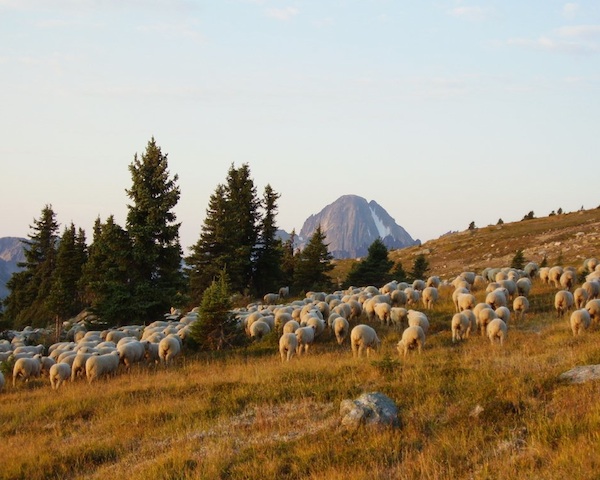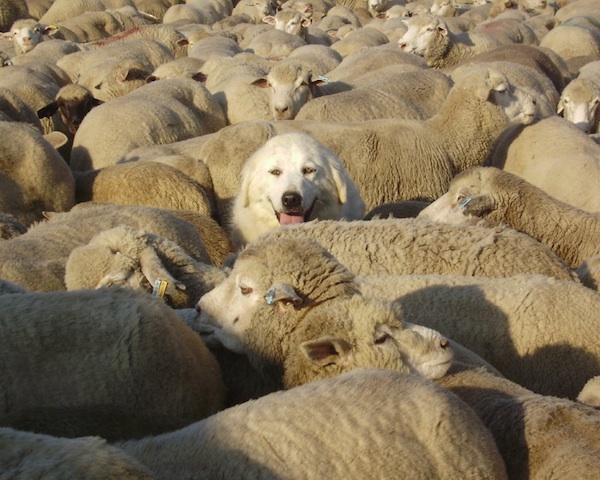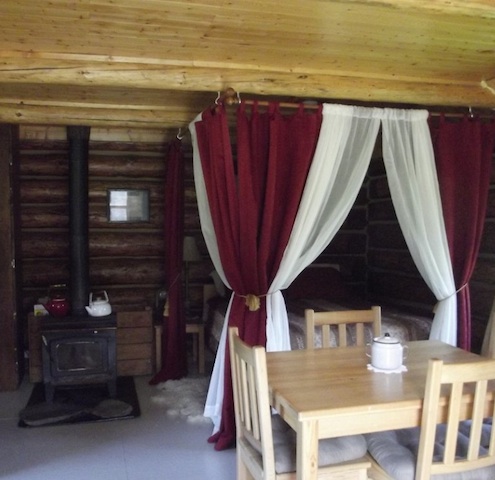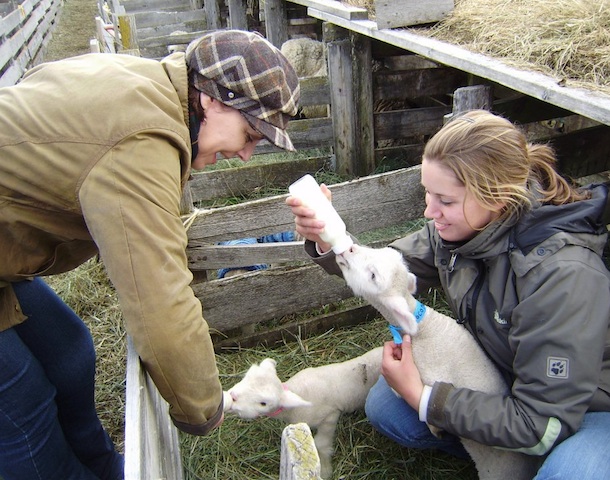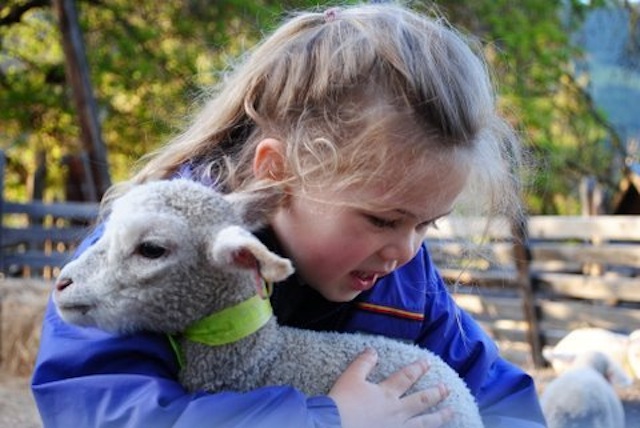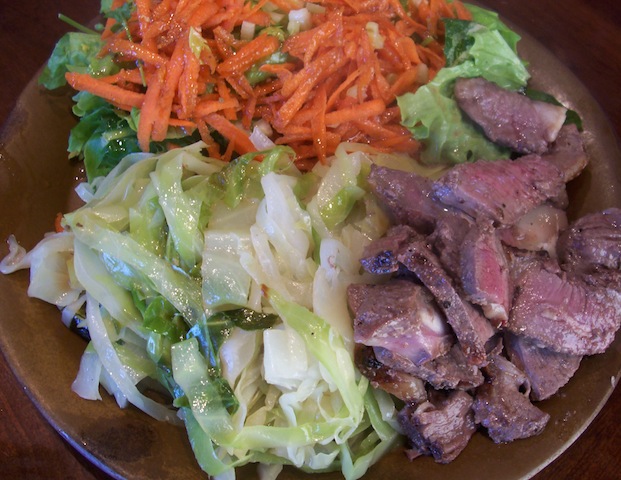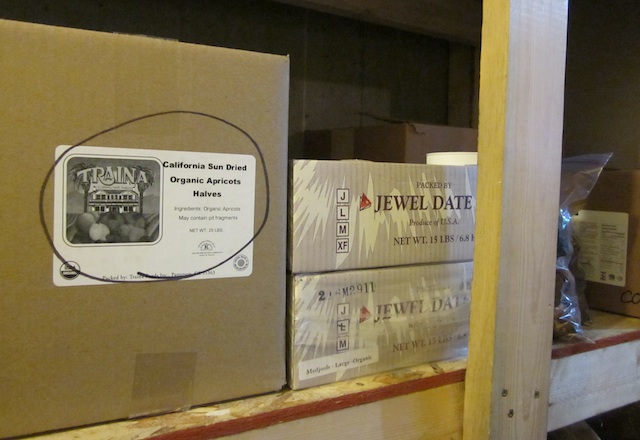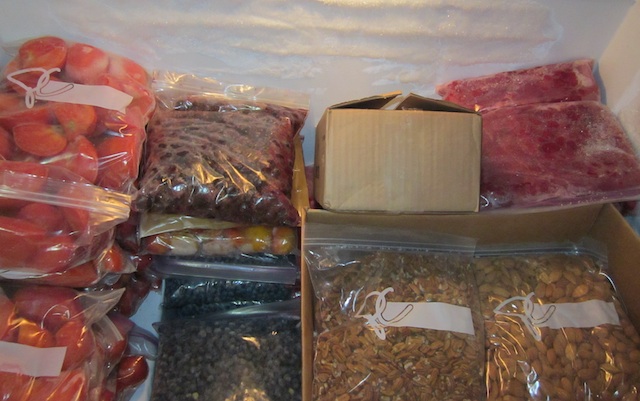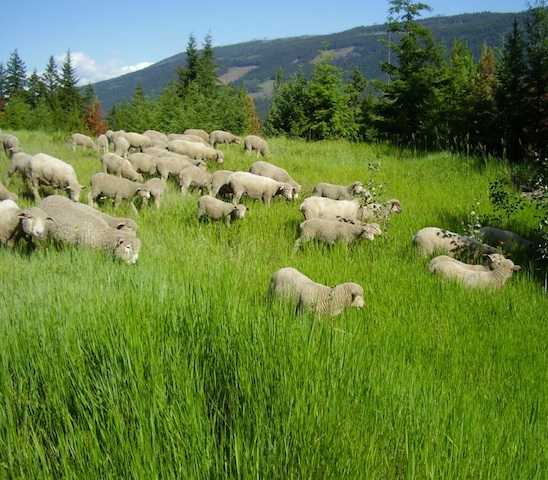
Here are the sheep feasting on the fast growing spring grass at Aveley Ranch. Aveley Ranch is located in a peaceful natural setting, where hard work produces abundance from the land.
GUEST POST by Valerie Moilliet/Gerber
Aveley Ranch was established in 1906 when our Grandfather homesteaded and remains in the Moilliet Family to this day. Situated in the upper North Thompson Valley, approximately 150km north of Kamloops, Tam Moilliet discovered the area while on a survey crew at the turn of the century. Carving out a home in the wilderness he was ready for his bride when she arrived from England. Mary braved blizzards and canoeing the North Thompson River to birth and raise her family.?On the premature death of her husband, her 16 year old son John — our Father — managed to keep the ranch going.? The Moilliet Family has always worked together, teaching skills to the younger generation, while respecting the wisdom of the older generation.
Keeping with family tradition, Grandfather?s 3rd & 4th generation continues to shepherd and nurture the flock through the seasonal cycles. Starting with a small flock of sheep in 1913, over the years our Father slowly increased the flock to about 1000 head. His son Ian, increased the flock to about 1300 head. Sheep is what we do on Aveley Ranch!
When the BSE Crisis hit in 2003, we decreased the flock size to about 500 head. In an effort to continue doing what we love — and with lamb prices so low — our family experimented with Agri-Tourism in 2005. Since we were already a destination for visitors at lambing season each spring, we began with tours of the lambing area. We included all the extra things that happen on a farm such as: hay rides, collecting eggs, and boat races on the creek. Of course, the biggest attraction is simply cuddling orphan lambs! The Solitude Heritage Cabin B&B is situated in the hub of the lambing area and is a great place to stay while on the ranch.
Traditionally, our sheep are a range flock. The flock grazes the high alpine meadows in the summer and domestic pastureland in the valley in the spring and autumn. The flock is fed hay produced from our own pastures during the winter months.?This adds up to succulent lamb, available each fall, fresh off the range, naturally raised. As a knowledgeable consumer you will know that Omega 3 fat is an essential fat that we require from the foods we eat. Scientific research has discovered that grass fed red meat is a valuable source of Omega 3 fat. Conjugated linoleic acid is also found in abundance in grass fed meat and dairy products. Grass fed lamb is a good choice for lamb connoisseurs concerned about naturally grown foods. If you are concerned about potentially consuming antibiotics or hormone residues, you will love our lamb!

Here are some of the other heritage buildings on the ranch. The Heritage B&B is the middle building.
If you are looking for wool, our Corriedale Sheep have soft, bright wool that is easy to work with. The wool is not so itchy as some of the coarser breeds, making the wool delightful to wear next to the skin. We have raw and processed wool available for sale on the ranch including: 2 strand yarn in skeins, 2 and 6 strand wool cakes, quilt batts, lopi yarn, and roving.
We would love to show you a little piece of the North Thompson Valley that is tucked away between the side of the mountain and our lovely river.?Lambing season begins on April 1st and carries on through the month. This is the best way to discover Aveley Ranch and see sheep up-close and personal! I hope to see you in the spring!
Aveley Heritage Sheep Ranch
Ian and Karen Moilliet, Joseph and Cadence Moilliet, and Valerie Moilliet/Gerber
2721 Birch Island, Lost Creek Rd, Vavenby, BC, V0E 3A0
T: 250.676.9574: Ian and Karen
T: 250.676.9234: Valerie
E: ian(a)smartsheep.ca: Ian and Karen
E: stump_pasture42(a)xplornet.com: Valeria
www.aveleyranch.com
149 km
grass-fed and alpine finished lamb, B&B, ranch tours, teashop, museum, hayrides, history tours, children?s activities

